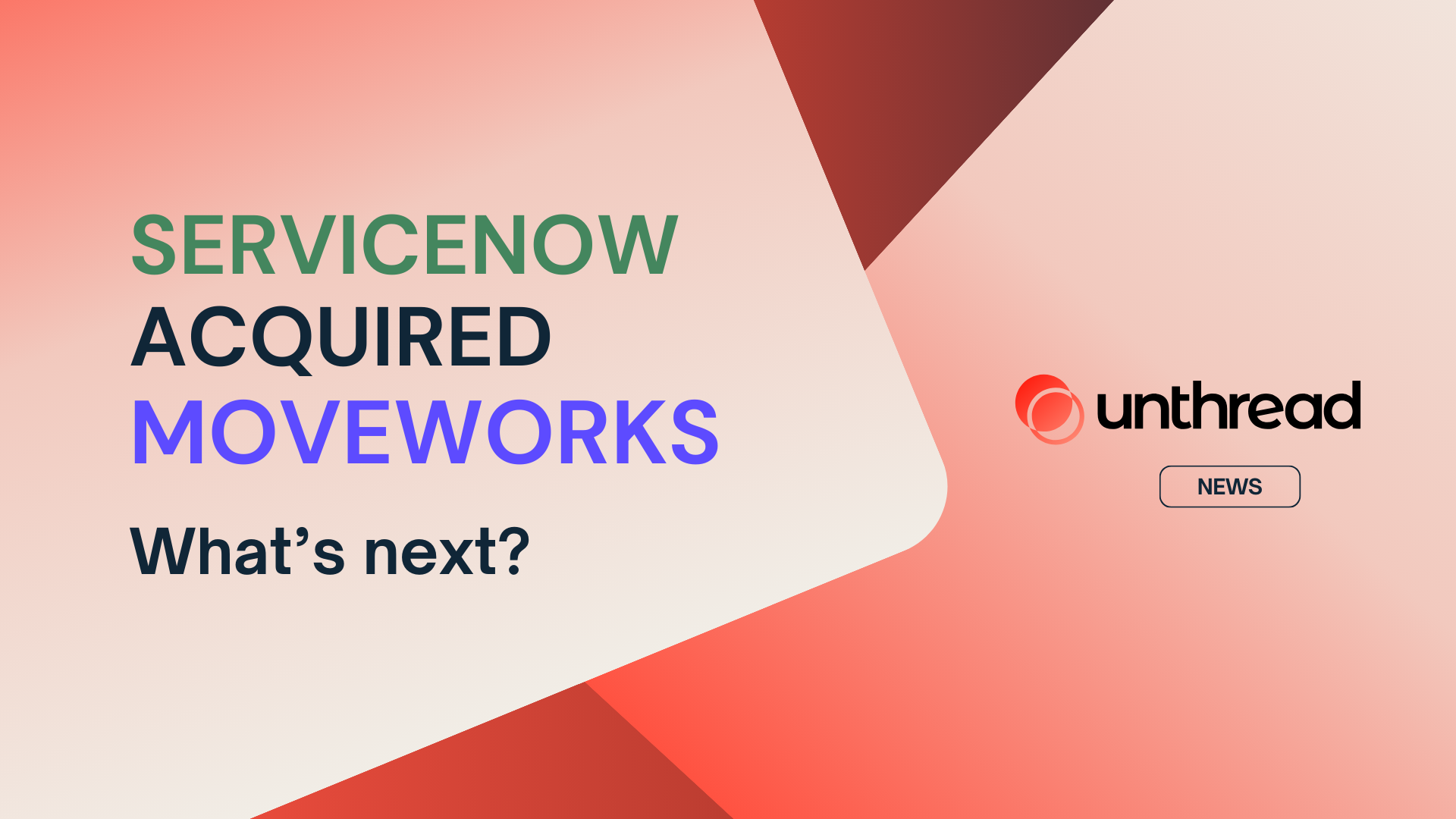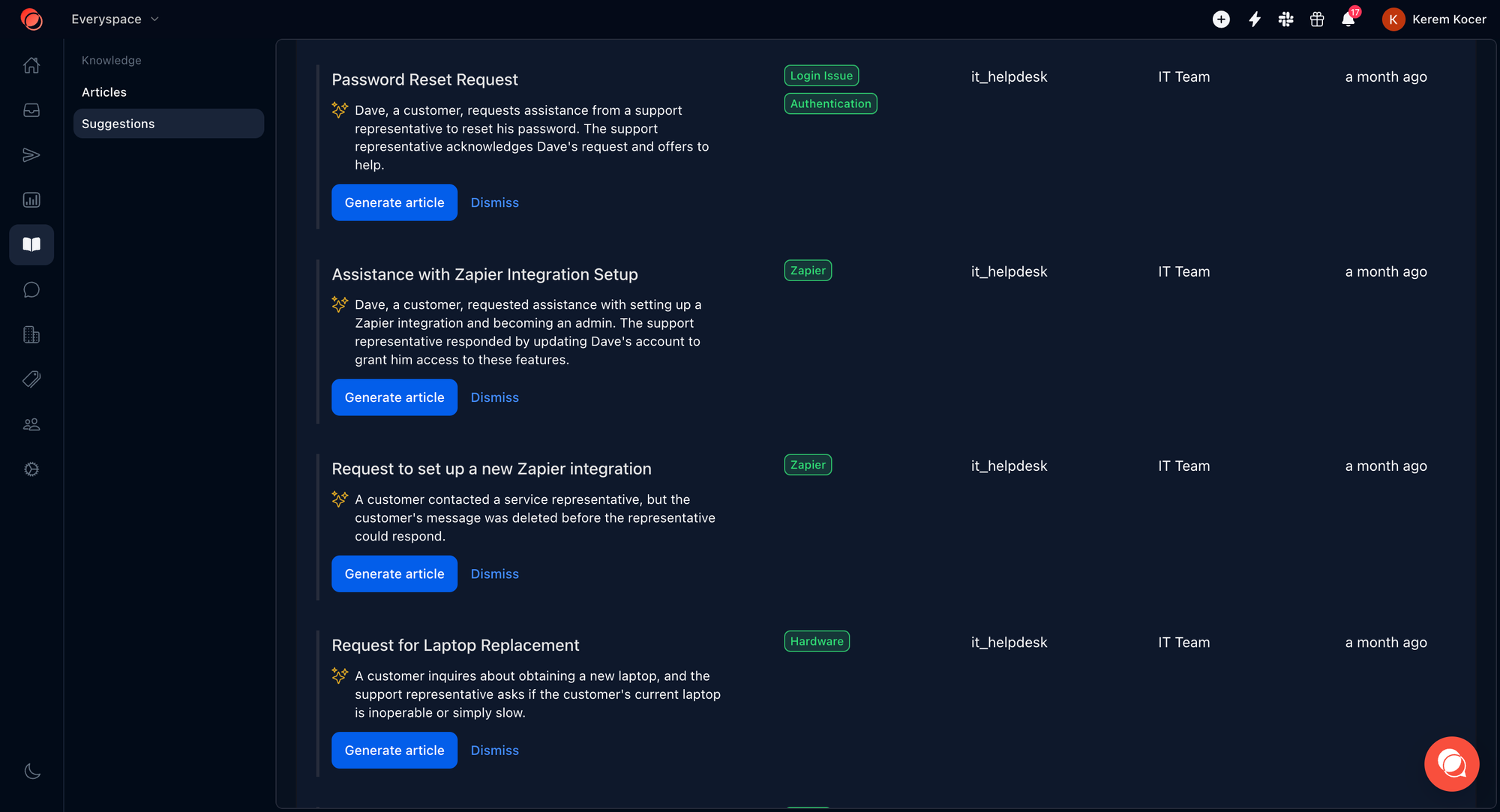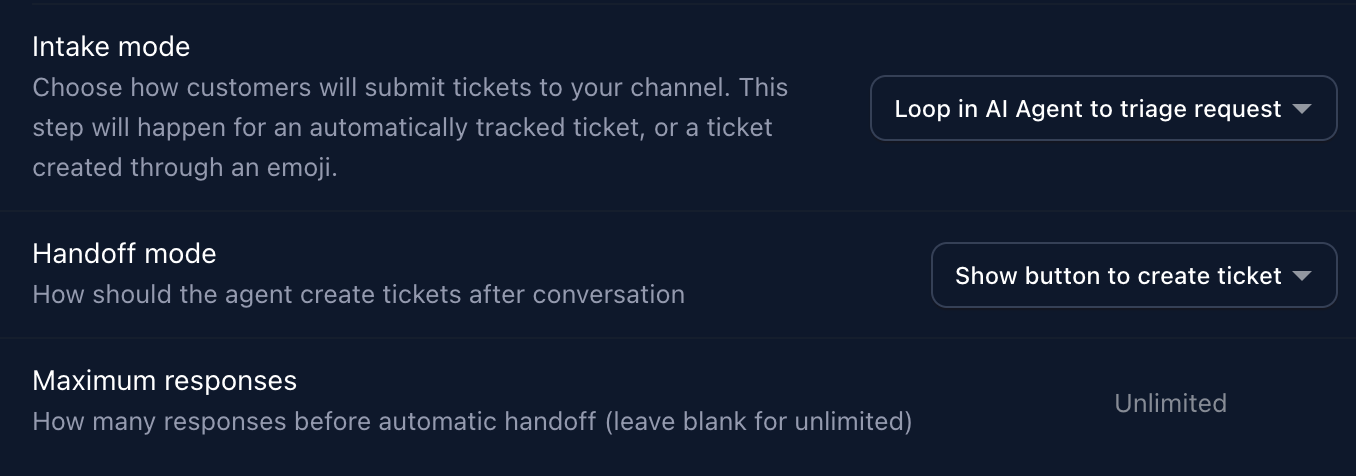Moveworks Alternatives Upon ServiceNow Acquisition

ServiceNow recently announced its agreement to acquire Moveworks for $2.85 billion in a combination of cash and stock, with the deal expected to close in the second half of 2025.
Moveworks in a nutshell
Moveworks was a magical tool that led the enterprise-level AI-layer market when it first launched in 2019. With the initial success, the company was able to sign customers like Spotify, Toyota, and Snowflake; leading them to be valued at $2.1B in 2021 and ultimately get acquired by ServiceNow in 2025.
Rather than directly competing with full-service ITSM platforms like ServiceNow or Jira Service Management, Moveworks strategically positioned itself as a complementary AI overlay. By integrating with existing ITSM systems, it enhanced their capabilities with features by:
- Conversational Interface: Ability to describe issues in natural language
- Automation of Routine Tasks: Categorization, triaging, and resolving of standard support requests.
- Continuous Learning: Refining the resolved tickets to evolve their AI through machine learning models.
What happens next
With the acquisition of Moveworks, Servicenow is planning on leveraging:
- Integration of AI Capabilities: Integrate Moveworks’ conversational AI and automation technologies directly into the Now platform.
- Phase out Offerings: ServiceNow may eventually phase out the broader third-party integrations that Moveworks once offered.
- Market Positioning: The acquisition is likely part of ServiceNow’s broader strategy to consolidate its market leadership in ITSM.
It makes sense for ServiceNow because it and Moveworks already have a number of mutual customers, and two companies' product offerings are tightly integrated - Amit Zavery (President & CPO of ServiceNow)
ServiceNow is not a tool for 99% of businesses, given that its minimum contract size is around $500,000. So the question becomes: what should Moveworks customers—who cannot (or should not) afford such a solution—do?
Best Moveworks Alternatives
This issue goes beyond just finding alternatives to Moveworks. Companies using a mix of Moveworks with tools like Jira, FreshService, BMC, or Zoho for their ITSM stack should consider adopting a complete ticketing tool, as those solutions might not fully meet their needs on the agentic layer. Once you experience the quality of AI-driven answers provided by Moveworks, platforms like Jira Service Management (JSM) or FreshDesk often fall short when it comes to handling your workflows and automation requirements.
Ultimately, you have three options: build your own co-pilot, stick with JSM or FreshDesk (legacy tools), or sign with an ITSM startup (Unthread) – especially since Unthread has been winning over customers from Moveworks, JSM, and FreshDesk.
Switching to Unthread

Unthread is a modern service management platform designed to automate internal service and support within organizations. Upon realizing that employees tend to collaborate in real-time through tools like Slack and Microsoft Teams, Unthread was developed as an end-to-end ITSM platform that's built into Slack.
Through AI agents and enterprise search functions, Unthread automates repetitive queries, allowing IT, HR, RevOps, and other operational teams to focus more complex problems.
On top of all the AI capabilities, the platform also offers workflows for major ITIL 4 frameworks such as incident management, service request fulfillment, access management, and change management. All in a conversational manner.
2-minute platform walkthrough
Unthread's knowledge base (kb) is engineered to continually improve its efficacy by learning from every user interaction. This dynamic system not only refines its responses over time but also proactively identifies documentation gaps. By suggesting new articles to address unanswered questions, it ensures that support content remains comprehensive and current.

Finally, the platforms automation workflows capabilties for every possible ticket type, solves the challenges of fragmented information and disjointed workflows. Through the multi-agent architecture, many AI agents can work systematically to resolve the ticket accurately, and hand the ticket off to the human in the loop when necessary.

Unthread vs Moveworks: Key differences at a glance
| Feature | Unthread | Moveworks |
|---|---|---|
| AI Integration | Rule-based + AI-driven automation seamlessly | Primarily conversational AI focused on IT support |
| Automation Workflows | Trigger/Schedule automation workflows for every ticket type | Limited to basic escalation automation |
| ITIL 4 Frameworks | Offers ITIL management solutions that offers multi-channel support. | Not available |
| Knowledge Management | Processes, parses, and embeds information to conversational flow | Largely returns articles based on semantic search |
| Customization & Flexibility | Scripts to connect/customize current workflows | Preset AI models, fewer customization options |
By living within the tools where employees already collaborate, Unthread eliminates the need for separate employee portals, offering a better employee experience.
Building your own "Enterprise Co-pilot"
The big old question, do I buy or build it internally? Skipping all the basics about resource management and all, there seems to be niche pros and cons in the ITSM space.
Building Internally
Although every IT operation looks similar on the surface level, every ops team we've worked with has had unique workflows, custom escalation paths, or specific compliance requirements that don’t fit neatly into a prebuilt system. What works well for one company might feel restrictive for another—especially when AI-driven automation starts handling more complex, agentic workflows.
Building internally gives you the flexibility to shape automation around your team’s exact needs. You’re not forced into predefined workflows or limited by what a vendor allows. Instead, you control how the chatbot processes requests, escalates issues, and integrates with internal systems.
Integration is another key factor. While Moveworks connects with common ITSM tools, some companies rely on proprietary or legacy systems that require deeper, more customized connections. Owning the platform means you’re not constrained by API limitations or forced into workarounds.
And then there’s the user experience. A custom-built system gives you full control over how employees interact with support. Whether it’s tweaking the chatbot’s tone, branding, or the way it guides users through self-service, you can create an experience that feels native to your organization.
If speed to deployment is the top priority, buying a solution like Moveworks makes sense. But if customization matter more, building in-house is the smarter move.
Why Buying Makes Sense
Agent experience. There are four main categories here that provides an immediate advantage:
- Removing agent friction using workflow automation
- Corptech procurement requests
- Employee onboarding/off-boarding
- Incident management coordination
- Quicker and more accurate triaging and escalations to tickets
- Knowledge base success feedback analytics (what docs do we need to create next)
Building in-house means missing out on much of this out-of-the-box functionality. Instead of focusing on improving agent productivity, you’d be stuck replicating core features that an enterprise-grade solution already gets right.
Traditional ITSM: JSM and Freshdesk
While ITSM platforms such as Jira Service Management (JSM) and Freshdesk have long been relied upon for their robust multi-channel interactions, ticketing systems, and automation workflows, they were not built from the ground up with native AI capabilities. Their lack of AI-readiness was how Moveworks was able to become an unicorn at first place. These platforms have:
- Limited AI Integration: Often depend on additional layers or third-party integrations to deliver the kind of AI-driven, conversational experiences that modern operations teams demand.
- Agentic Layer Dependency: As companies increasingly lean on AI for efficient problem resolution, relying solely on JSM or Freshdesk might not suffice for those who need truly adaptive and intelligent systems.
- Complex Workflows: For organizations that require more than basic automation—especially those aiming for dynamic, context-aware support—traditional ITSM tools may require significant customization or supplementary solutions that may only be available for enterprise customers.
Conclusion
The acquisition of Moveworks by ServiceNow marks a significant shift in the ITSM landscape, raising important questions for organizations about the future of their support ecosystems. While ServiceNow’s move suggests a trend toward consolidating AI capabilities within existing platforms, companies have a range of choices. For those seeking a modern, AI-native approach with a conversational interface embedded in everyday tools like Slack, Unthread emerges as a compelling alternative.
Ultimately, the decision will hinge on balancing the need for innovation, customization, and rapid deployment against the operational realities of managing IT support in a rapidly evolving digital environment.

